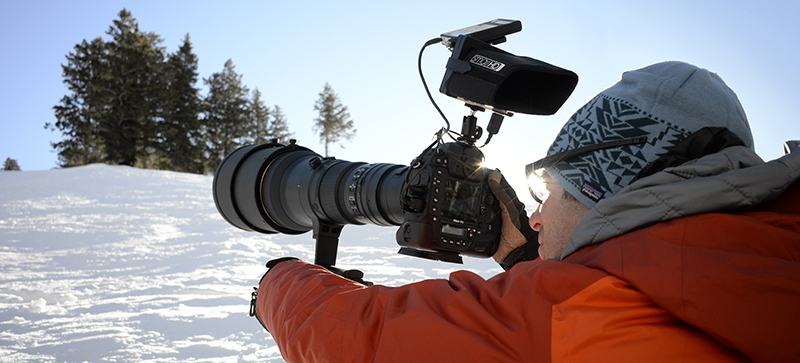Dear Corey,
I have recently upgraded to the great Nikon D4s and have a quick question. Do you have any good advise on the settings to obtain an optimum quality video file for grading and post?
Thanks for all the great inspiration you have provided over the years. Amazing stuff!
Best,
Niklas Halle’n
Hi Niklas, thanks for the question! Before diving into the technical nitty gritty, I want to start by reminding everyone that when it comes to using our cameras, it can be easy to get bogged down by some of these technical issues. But what’s most important to remember is that we have a story that we’re trying to tell. You can have the most technically well-executed content, but if the story sucks then it will be less compelling than content with a good story that maybe has some technical issues. So remember: story first, technical stuff second.
That said, let’s dive in! I’ll give you some broad thoughts on how I approach my video settings, and then provide a complete run-down of the settings on my Nikon D4s.
First of all, it’s worth pointing out that there are a lot of settings on the D4s, and just because they are there, doesn’t mean you have to use them. I really only use about 5 percent of the settings on my D4s, simply because those are the ones that affect me and the work I’m doing.
Frame size: Always shoot at the highest resolution your camera allows. On a D4s, that’s 1920 x 1080.
For the microphone, 9 times out of 10, I’m set to manual. The one exception is when I’m shooting run-and-gun style video; then I’ll use auto. But when I can control the situation, I’ll be in manual.
For frequency response, it’s wide. I turn off the wind-noise reduction.
For destination, I’ll always be shooting to the fastest CF SanDisk cards on the market.
For color profile, we’re typically set to standard. The only exception will be if we know we’re going to do some heavy color work in the aftermath; then, we might go flat or neutral.
With white balance, I’m never in automatic. Never. I’m always deciding the white balance based on the situation I’m in, and making sure that any B or C cams are also set to the same white balance as the D4s. It’s super easy to set a custom white balance using a white/gray card, so all of your cameras will have identical white-balance settings.
For ISO, I’m almost always manual. The only exception to this rule is if I’m shooting a transition from a dark area to a bright area, or vice versa. If you watch my Nikon D4s behind-the-scenes video, I describe this in further detail:
In general I set the shutter speed to two times the frame rate and I always shoot video at either 24 fps, or 60 fps. Never 30 fps.
So, to recap, here’s the list of settings that I find useful.
- Frame size: 1920×1080 @ 24fps or 60fps
- Movie Quality: High
- Microphone sensitivity: Depends on situation, but often manual.
- Frequency Response: Wide
- Wind Noise Direction: OFF
- Destination: Main Memory (CF)
- ISO Setting: Almost always manual.
- Color Profile: Almost always Standard.
- White Balance: Always depends on situation.
- Shutter: Always 2x frame rate.

8 comments
I love your recommendations. Short and simple. I do have two questions however:
Why the shutter is 2x frame rate? I’ve seen this recommendation before and never understood why?
What’s wrong with 30fps? I have d4 and 30 is my best option. should I shoot 24 instead?
Thank you in advance
Hi Alex, glad you liked this piece! The rule of thumb is to always TRY and shoot with your shutter speed 2x that of your frame rate. This is sort of a default setting, a standard in the HDSLR video world and touted to be the most widely accepted look. The reason behind this is because the speed of your shutter dictates the amount of motion blur in your video frame, just as in still photography. The faster your shutter speed, the less motion blur and in turn, a choppier video file. This is not always a bad thing! On the other hand, the slower you set your shutter speed, the more motion blur you have, creating long blur trails in your video file especially when there is fast action in your frame. Again, sometimes this maybe a desired look. My recommendation is to experiment. Try using a faster shutter speed and a slower one in varying situations and see what the end result looks like. Then, if the time comes you can always break the 2x rule and add some extra creativity to your video.
When you shoot flat on the d4s – what is the color profile?
Hello Corey Rich.
Thanks for sharing this great and simple article on how to set up the D4s for shooting video. My biggest question is which AF mode to use when shooting video. What are your AF settings that you use most of the time?
Thank you.
Hello Corey
i noticed that during filming it’s easily getting out of focus and then you have these re-focusing moments in your movie. how to avoid this ?
thanks
Daniel
did you come up with a solution Daniel? this is my biggest problem also
Hey! Thanks a lot for this info. I have a problem, though. In my D4s I can´t use 1/50 shutter speed when I´m shooting video. As you said, the shutter speed should be double the frame rate, so if it´s 24 fps, the closest speed that doubles that would be 1/50, right? Or is there some hidden menu that I´ve yet to discover? When I´m shooting video, the slowest shutter I can go is 1/60. Why is that? Any advice?
Actually, I just realised I was wrong: I can get 1/50 shutter speed so nevermind.
Comments are closed.